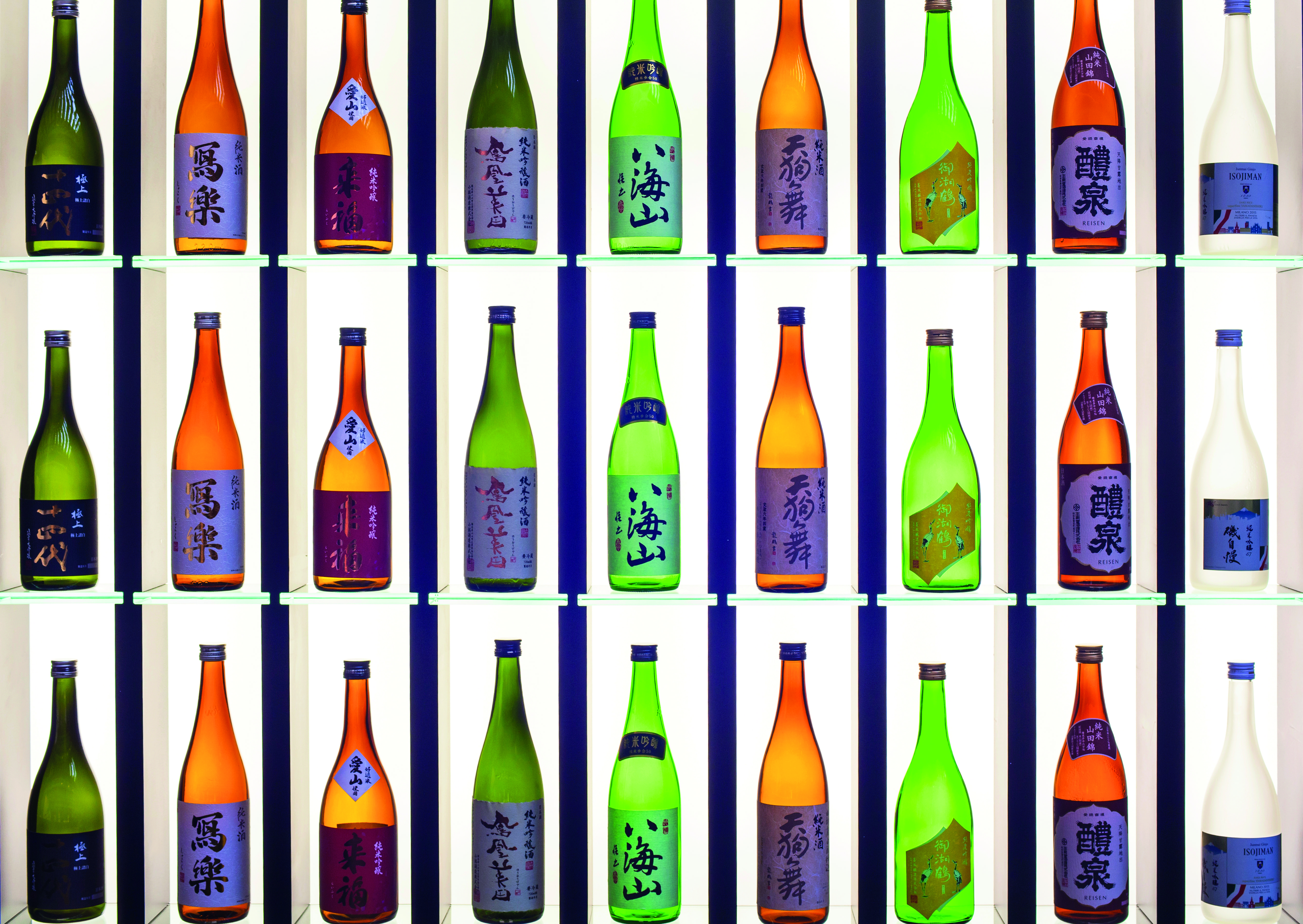
When Elliot Faber, sake consultant and co-founder of the Yardbird Group, first moved to Hong Kong seven years ago, the city had yet to develop a taste for sake. The drink was still referred to as “rice wine” and frequently served hot in Japanese restaurants. Premium brews could be found at international chains such as Nobu or Zuma, but there were few restaurants specialising in sake.
Today, the food scene is awash with the beverage, both off-premise and, increasingly, at trendy non-Japanese eateries. It’s on the menu at high-end Chinese restaurant Mott 32 and Mexican joint Chino, and paired with pho at Vietnamese Co Thanh. Last autumn, Faber helped launch a new sake-focused bar and retail space called Sake Central, which will also double as an educational facility. “The word is out, and now Hong Kong loves sake of all kinds,” Faber says.
Big in Japan?
Once beloved as the drink of choice in its native Japan, sake has taken a back seat to other varieties of alcohol – namely beer, wine and shochu, the country’s indigenous distilled liquor. Domestic sake consumption has fallen from its peak of 1.67 million kilolitres in the mid-1970s to just 557,000 kilolitres in 2014, according to government statistics. Overseas sales, however, are booming. In the past decade, exports have doubled to 19,737 kilolitres in 2016. Roughly a quarter of shipments go to the US, followed by Taiwan, Hong Kong, China and South Korea.
While exports account for only a fraction of total sales, industry professionals are hopeful that the upward trend will continue.
One reason behind sake’s appeal is its breadth of flavour profiles – which can range from fruity and floral to toasty and earthy, light and dry to viscous and sweet. The drink is made from rice, water, and koji – an enzymatic catalyst made from rice and the mould Aspergillus oryzae, which breaks starch chains into sugar molecules. Variations in the production process result in distinct different styles. Some varieties contain a small percentage of distilled brewer’s alcohol, which creates lighter-textured and delicately aromatic brews. But consumers outside Japan will more often encounter junmai (pure rice) varieties with no added alcohol, thanks in part to the drink’s associations with purity and higher import taxes on alcohol-added brews.
Versatility makes it an attractive pairing partner for sommeliers. Sake’s high levels of amino acids lend umami richness to the drink that complements seafood and fermented foods such as cheese, miso and fish sauce – as well as hard-to-match ingredients such as asparagus and artichoke. While the sour and funky notes found in these foods can overpower white wines or bring out harsh tannins in reds, sake’s smooth- textured, taste-amplifying character “lacks the elements that will make wine-killing foods like aged beef, pickles or mustard taste bad,” says Monica Samuels, national sake sales director for US import company Vine Connections.
At Michelin- starred Nerua in Bilbao, Spain, sommelier Ismael Alvarez pairs sake with a radical dish of artichoke, olive, and anchovy broth. In Paris, Paz Levinson serves aged sake with the white asparagus beignet at contemporary French bistro Virtus. At Cosme in New York, US, beverage director Yana Wolfson recommends sake with signature dishes such as fluke aguachile (a chili-spiked ceviche made with lime and garum).
Reinventing the beverage service
Many places experimenting with the drink offer only a limited selection, or include it as part of a pairing menu, but some top restaurants have begun fully integrating sake into the beverage programme. The award-winning wine list at Copenhagen’s Geranium includes a section with bottles of Dassai from Yamaguchi Prefecture and Kozaemon from Gifu Prefecture. Wine director and co-founder Soren Ledet fell in love with the drink during a visit to Tokyo more than 10 years ago and rolled out Geranium’s sake programme in 2015.
Like the food – which is based on modern Scandinavian cuisine but takes inspiration from Asian, Indian, and South American cooking – the beverages reflect an eclectic, international sensibility that resonates with the restaurant’s cosmopolitan guests.
“It’s important to have an international wine list for our international clientele,” Ledet notes. “For example, when we have people coming from South America, they’re not necessarily going to drink wine from Mendoza, but seeing it on the menu makes them feel more comfortable. Similarly, sake does that for our Japanese guests.”
Sake also offers “ways to reinvent beverage service that are impossible with wine”, says Samuels of Vine Connections. The drink can be enjoyed at various temperatures – served frozen, chilled, room temperature or piping hot – and in vessels that subtly alter its flavour profile. Sake’s textural range can turn up the volume on contrasts that create dramatic, cerebral pairings. Matching the mouthfeel of sake to the level of fat in a dish, for example, adds another dimension to the triple-axis of acid, sweetness, and tannin frequently used to talk about wine pairing.
“Putting a luxuriously textured sake together with an opulent cut of fish is a different approach to pairing that can be illuminating to the guest,” she explains.
In addition to the exciting array of pairing possibilities, Ledet says that sake offers “a great opportunity for story-telling and teaching guests about the production process,” as well as the culture and history of the drink.
Culinary objectives
A clear focus is the key to building a solid sake programme. FCSI associate member John Reed from Illinois, US-based company Customized Culinary Solutions is a trained chef and certified Cicerone. He helps restaurants create beverage portfolios by first asking them to define their culinary objectives.
“It’s important to decide if sake is going to be a core part of your ideology. Are you trying to be a cocktail lounge, or are you going to be specialising in sake?” he says. “If your programme is too broad, you won’t be successful because there will be no focus in staff training.”
Viewed as a bridge between wine and beer, sake is often listed between these categories on the menu. If printed, each entry should include brewery name, brand name, style and region. Although some restaurants are keen to include more information, Reed warns: “If the menu gets too complex, people won’t order.”
Guests should have the option of ordering by the glass, and tasting flights are a good way to encourage those who are unfamiliar to try it. “I recommend that at least 80% be available by the glass,” Faber says. “A bottle of sake [when opened] is more forgiving than white wine, if temperature control is followed.”
The most important strategy for implementing sake service, however, is to learn about it. Until relatively recently, most sake certification programmes were available only in Japanese, but Japan’s Sake Service Institute now holds international courses in English. In 2014, the London-based Wine and Spirits Education Trust (WSET) launched its Level 3 award in sake, which offers in-depth instruction for beverage professionals at approved programme providers in 14 countries. More resources are also available online.
“Taste a lot before you start introducing sake, and don’t just put it on the menu because it’s trendy,” says Geranium’s Soren Ledet. “If you can’t go to Japan, read as much as you can or watch videos about the production process and history first.”
Melinda Joe




